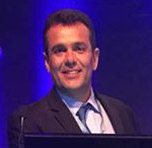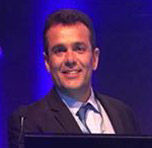Day 1 :
Keynote Forum
Carlos Verges
Director of Area of Advanced Ophthalmology, Spain
Keynote: Intense ultra-regulated pulsed light in the treatmnet of Meibomian Gland Dysfunction
Time : 09:45-10:30

Biography:
Carlos Vergés is currently Professor of Ophthalmology and Director of Area Oftalmologica Avanzada, Universidad Politécnica de Cataluña, where he performs his clinical and research activity, collaborating with the Laboratory of Physical Optics, Facultad de Óptica y Optometría de Tarrasa. Now it focuses its interest in Dry eye disease, in the search of new treatments, developing a new therapeutic method of improvement of the physiological state of the ocular surface and the eyelids, based on the application of intense ultra-regulated pulsed light.
Abstract:
Lipid deficiency occurs in 76.7% of dry eye patients with a prevalence of meibomian gland dysfunction (MGD) in the
majority of eyes. The treatments of MGD have been shown only short-term symptom relief. This suggests that we need
more treatment options, one of which is intense pulsed light therapy (IPL). IPL treatment applies Xenon flash lamp to emitting
wavelengths of light ranging from 400 to 1200 nm. The initial application of IPL for dry eye patients began in 2002 and from
that, different authors have used this technology reporting good results. In our case, we have improved the IPL with a new
system called Intense Ultra-Regulated Pulsed Light (IURPL, Thermaeye ®) which generate short pulses with low energy. The
aim of his study is to explore the safety and efficacy of intense ultra-regulated pulsed light (IURPL) in MGD eyes.
Methods & Methodology: This is a prospective and open label study. 184 eyes of 92 MGD patients were recruited and received
4 consecutive IURPL treatments on day 1, day 7, day 21, and day 45, with a follow up of 6 months. Symptoms were evaluated
with OSDI score. Best corrected visual acuity, IOP, conjunctival injection, upper and lower tear meniscus height, TBUT, corneal
staining, lid margin and meibomian gland assessments, and meibography were also recorded.
Results: Significant improvements were observed in single and total ocular surface symptom scores, TBUT, and conjunctival
injection at all the visits after the initial IURPL treatment (P<0.03). Compared to baseline, the signs of eyelid margin, meibomian
gland secretion quality, and expressibility were significantly improved at every visit during 6 months after treatments. There
was no regional and systemic threat observed in any patient.
Conclusion: Intense ultra-regulated pulsed light (IURPL) therapy is a safe and efficient treatment in relieving symptoms and
signs of MGD eyes.
Keynote Forum
Mouna Al Saad
University of Jordan, Jordan
Keynote: Sub-foveal choroidal thickness in diabetics and non-diabetics

Biography:
Mouna Al Saad is a Consultant Ophthalmologist and an Assistant Professor in the Department of Ophthalmology at the University of Jordan. Her topics of interests
are Vitreoretinal Surgery, Corneal Graft and Modern Cataract Surgery. She is a member of the Jordanian Ophthalmic Society and fellow of the Royal College of Physicians and Surgeons of Glasgow, UK. She has already worked as a Researcher, Teaching Assistant and a General Ophthalmologist in the University of Jordan, and Jordan University Hospital, Jordan. She has done her Medical degree from the University of Jordan, School of Medicine, Jordan. She has done her Residency in Ophthalmology from the Jordan University Hospital, University of Jordan.
Abstract:
Objectives: The objectives of this study are to measure the macular choroidal thickness in diabetics without diabetic retinopathy and
to compare it with non-diabetics, and to correlate that with age and refractive error.
Method: This is a retrospective, observational and case series study. EDI-OCT images were obtained in diabetics without apparent
diabetic retinopathy with a spectral domain OCT. The sub-foveal choroidal thickness was measured from the outer boarder of the
retinal pigment epithelium to the inner scleral boarder. Statistical analysis was performed to evaluate CT and to correlate it with age,
refractive error in eyes without diabetic retinopathy.
Results: We studied 65 eyes of 38 patients (30 eyes were of diabetic patients) aged between 26 and 79 years. There were 17 males and
21 females in which 30 eyes were of 21 diabetic patients and 35 eyes were of 19 non-diabetic patients. It was observed that, the mean
CT had no significant difference between patients with diabetes mellitus and non- diabetic subjects (256±108 um vs. 265±105 um),
p=0.51.
Conclusion: Patients with diabetes mellitus had a slightly but statistically insignificant, thicker sub-foveal choroid than non-diabetic
patients
Keynote Forum
Dorina Cheles
Department of Ophthalmology, Baruch Padeh Medical Center, Israel
Keynote: Colony Forming Unites - Endothelial Progenitor Cells (CFU-EPCs) –A surrogate marker for diabetic retinopathy and high cardiovascular mortality rate

Biography:
Abstract:
Diabetic retinopathy is a risk factor for increased cardiovascular death. Our purpose was to find a significant difference in levels
of endothelial progenitor cells (EPCs) in the peripheral blood of patients at different stages of diabetic retinopathy. In this
prospective study, colony forming units of endothelial progenitor cells (CFU-EPCs) in peripheral blood were counted. Forty subjects
were enrolled (10 healthy [41±8 y], 10 type 2 diabetes mellitus (T2DM) [64±12 y] without retinopathy, 10 T2DM patients [62±26
y] with non-proliferative retinopathy (NPDR), 10 T2DM patients [66±9 y] with proliferative retinopathy (PDR)). The study was
approved by the ethics committee of the hospital and every subject signed a consent form before enrollment. Growing CFU-EPCs
was according to the Hill's EPCs protocol. Blood was drawn early in the morning and was processed within one hour. Mononuclear
cells were separated and cultured on fibronectin-coated plates with EndoCult medium (Stemcell Technologies, Vancouver, Canada)
for 5 days. CFU-EPCs were counted on day 5 (an average of 8 wells). It was observed that healthy subjects had 36±8 CFU-EPCs,
patients without retinopathy had 13±12 CFU-EPCs (p<0.01), patients with NPDR had 22±26 CFU-EPCs (p=NS), and 2±2 CFUEPCs in patients with PDR (p<0.01). A significant difference was found between patients with PDR and with NPDR (p<0.05). It was also observed that, CFU-EPCs were inhibited in T2DM patients with DPR. Levels of CFU-EPCs can be used as a surrogate biologic
marker to determine the severity of diabetic retinopathy and for cumulative vascular risk.
Keynote Forum
Tarun Sharma
Worcestershire Acute Hospitals NHS Trust, UK
Keynote: Enabling patient-centred care through information and technology

Biography:
Tarun Sharma is a Consultant Ophthalmic Surgeon at Worcestershire Acute NHS Trust since 2007. He has done his Ophthalmology training from Midland Eye Centre, Oxford Eye Hospital and Moorfields Eye Hospital in UK. He has special interest in routine and complex cataract surgery. He has also delivered lectures
at Royal College meetings and abroad (Europe, USA and Asia) on the subjects of glaucoma management and modern glaucoma surgery, as well as on cataract surgery in patients with glaucoma. He has launched the Worcestershire Glaucoma Support Group, which provides education and support to patients with glaucoma
enabling them to achieve better outcomes. He has won many awards in Ophthalmology for best patient education and teaching initiative. He has also worked with the Department of Health UK and Mckinsey USA to help in the development of national policies for UK eye care.
Abstract:
The level of patient education given is substandard and the current patient education systems are ineffective. The main reasons are
outdated materials, inappropriate timing and manner of rushed presentation. Most people need to review information three to
five times before retention. Worcestershire glaucoma team pioneered patient education through support meeting and digital patient
education. Worcestershire Glaucoma Support Group was set up in 2009 to provide education and support to patients with glaucoma
to improve compliance and adherence with treatment. We organize 2-3 patients/public free meeting every year. We have an average
of 135 attendees. Such meetings provide patient-to-patient interaction and networking. We decided to make such support online by developing a website providing educational videos regarding various treatment options. Patients have an option to watch these videos as and when they want, in the company of their family (who were unable to attend hospital appointment). This can be done in the
comfort of their living room. It gives them an option toreview/replay the video as much time as needed. We also developed up to date
downloadable information leaflets for our patient. These educational videos are regularly used in glaucoma unit for informed consent
purposes. We have more than 4500 visitors to our website in 12 months. Visitors have downloaded more than 22,000 pages from our
website. Our online feedback score is 4.9/5. Support group’s initiatives led to significant fund raising which allowed ophthalmology department to purchase equipment worth £250,000. Digital patient education is way forward for consent and service deliver purposes while enhancing the patient experience and quality of service.
Keynote Forum
Magno Ferriera
Chairman Federal University Of Uberlandia-UFU, Brazil
Keynote: Treatment of optic disc pit associated serous Macular Detachment: Case Reports

Biography:
Chairman Of The Department Of Ophthalmology Of Federal University Of Uberlandia-UFU. Associate Professor At UFU. Director And President Of Uberlandia Eye Hospital– HOLHOS. Vice Presidente Of Brazilian Retina And Vitreous Society- BRAVS.
Abstract:
One sentence objective: Optic disc pit associated with serous retinal detachment is a rare condition and there is no "gold standard" to treatthis disease. We are discussing few cases that were treated with PPV and gas.
Overview: In 1882, Wiethe described abnormalities in both optic discs in a 62-year-old woman. This most likely was the first report of Optic Disk Pits, OPD. Both men and women are equally affected by OPD and 10 to 15% are bilateral. Most are non-familial and there are few reports with an autosomal dominant pattern of inheritance. 70% occur on the temporal side of the disc, 20% centrally and 10% inferiorly, superiorly and nasally. Most are gray in color, although they varied from yellow to black. OPD’s can be very small to large in size. Normally, a gray fibroglial membrane appears to overlie the pit in many cases. Cavities in the Optic Nerve Head appear as tilted discs, peripapillary staphyloma, morning glory disc anomaly, colobomas and congenital ODP. Associated retinal changes may occur. If the ODP is located centrally, it is less likely to be associated with retinal changes. An ODP along the rim of the optic disc are usually seen in association with peripapillary chorioretinal atrophy, RPE changes or SRD. There’s a Posterior Vitreous Detachment in 50% of the cases of Serous Retinal Detachment, SRD, patients. The prevalent theory is that the associated sub-retinal and probably intraretinal fluid derives from liquefied vitreous that passes through the opening created by the ODP. Serous Retinal Detachment, SRD, most frequently occurs in early adulthood but can varied from six to 90 years of age. It has been discussed that the fluid from the vitreous enters through the ODP and actually travels between the inner and outer layers of the retina, which produces a retinal schisis (1-3). OCT, Optical Coherence Tomography, has shown inner retinal schisis preceding outer-layer detachment (4-6). SRD are generally low (less than 1.0 mm in height). The elevated retina often
contains cystic regions within the inner nuclear layer. Occasionally, the cystic areas ruptured outward, producing a Lamellar Macular Hole, but, with intact ILM, Internal Limiting Membrane (4-6).
Purpose: The purpose of our paper is show the surgical treatment of ODP associated with SRD using PPV and gas. There is no "gold
standard" to treat these patients and laser, gas or association has been reported. In the literature, the best option is PPV and gas, but few cases are reported and there is no evidence that the surgical treatment is the best option for these patients.
Methods: Four patients were diagnosed with ODP and serous retinal detachment, between November 2013 and October 2015. The patients were examined with indirect ophthalmoscopy, fundus photography and to confirm the diagnosis spectral domain OCT was done. The patients had done, before our examination, refraction and the BCVA was recorded. The patients were treated with pars plana vitrectomy, posterior hyaloid detachment, internal limiting membrane peeling, fluid air exchange, laser in the temporal side of the disc, and C3F8. All patients were oriented to maintained face down position for at least four days and were followed with OCT postoperative and refraction, at least three months after the surgery.
Results: All patients improved their vision. The patients remained with residual amount of fluid in the macula area during the follow-up but it was remarkable less than before surgery. The first patient (BEC, 16 years old) had vision of 20/800 and after six month the vision improved to 20/80 with some fluid in the macula, after almost two year. Another doctor submitted her to gas and laser, two months before surgery, without improvement. The second patient (EJS, 39 YO) improved his vision from 20/100 to 20/50. He had foveoschisis in the macula area with lamellar macular hole that improved to discreet schisis and resolution of the lamellar macular hole. The third patient (JAS, 42 YO) had 20/80 BCVA with foveoschisis that improved to 20/60 with only small cystic lesions in the macula. The fourth patient (CAS, 54 YO) had BCVA of 20/400 and improved to 20/60. The patient had SRD and foveoschisis that improved after 5 months, but some fluid and schisis still remains in the macula area.
Conclusions: The most widely accepted treatment for patients with ODP and SRD is a surgical approach involving PPV with or without ILM peeling, with or without endolaser photocoagulation and gas endotamponade (7-10). All patients treated in our reported cases had improved their vision, SRD or schisis associated. The limitation of this paper is the small number of patients and no control group.
Keynote Forum
Tarun Sharma
Worcestershire Acute Hospitals NHS Trust, UK
Keynote: Trabectomevs I-stent in moderate open-angle glaucoma-single surgeon results

Biography:
Tarun Sharma is a Consultant Ophthalmic Surgeon at Worcestershire Acute NHS Trust since 2007. He has done his Ophthalmology training from Midland Eye Centre, Oxford Eye Hospital and Moorfields Eye Hospital in UK. He has special interest in routine and complex cataract surgery. He has also delivered lectures
at Royal College meetings and abroad (Europe, USA and Asia) on the subjects of glaucoma management and modern glaucoma surgery, as well as on cataract surgery in patients with glaucoma. He has launched the Worcestershire Glaucoma Support Group, which provides education and support to patients with glaucoma enabling them to achieve better outcomes. He has won many awards in Ophthalmology for best patient education and teaching initiative. He has also worked with the Department of Health UK and Mckinsey USA to help in the development of national policies for UK eye care.
Abstract:
Aim: To compare the safety and efficacy profile after combined micro-incision cataract surgery (MICS) and micro-invasive glaucoma surgery (MIGS) with the ab interno trabeculectomy (Trabectome®) versus iStent® inject devices in patients with open-angle glaucoma (OAG) and cataract.
Method: This retrospective comparison study included 60 eyes which were treated with combined MICS and ab interno trabeculectomy (group I, Trabectome®) (30 eyes) and iStent® inject devices (group II, GTS 400) in 30 eyes. Primary outcome measures included intraocular pressure (IOP) and glaucoma medication after 6 weeks, 3, 6 and 12 months follow-up. Secondary outcome measures were number of postoperative interventions, complications and best-corrected visual acuity (BCVA).
Results: Mean preoperative IOP decreased from 23.3±3.7 mmHg in group I and 22.8±4.1 mmHg in group II to 14.8±3.6 mmHg
for trabectome and 16.8±2.3 mmHg for iStent inject, respectively at 12 months after surgery. When percentage drop was assessed,
group 1 (trabectome) had 37.17% drop in IOP, while group II had 22.93% drop in IOP. No vision-threatening complications such
as choroidal effusion, choroidal hemorrhage, or infection occurred. In each group, 2 eyes developed cystoid macular edema which
responded to topical treatment. In each group trabeculectomy had to be performed in one eye due to insufficient IOP lowering effect.
Conclusions: Ab interno trabeculectomy and iStent® inject were both effective in lowering IOP with a favorable and comparable
safety profile in a comparative study over a 12-months follow-up in OAG. Trabectome appears to have a greater percent drop in
IOP than iStent in this study. However, longer follow-up of these patients will be necessary to determine long-term outcomes and to
evaluate significant differences.
- Retina & Retinal Disorders | Ophthalmology Practice & Case Studies
Location: Chamber Suite

Chair
Tarun Sharma
Worcestershire Acute Hospitals NHS Trust, UK
Session Introduction
Mouna Al Saad
University of Jordan, Jordan
Title: Sub-foveal choroidal thickness in diabetics and non-diabetics

Biography:
Mouna Al Saad is a Consultant Ophthalmologist and an Assistant Professor in the Department of Ophthalmology at the University of Jordan. Her topics of interests are Vitreoretinal Surgery, Corneal Graft and Modern Cataract Surgery. She is a member of the Jordanian Ophthalmic Society and fellow of the Royal College of Physicians and Surgeons of Glasgow, UK. She has already worked as a Researcher, Teaching Assistant and a General Ophthalmologist in the University of Jordan,and Jordan University Hospital, Jordan. She has done her Medical degree from the University of Jordan, School of Medicine, Jordan. She has done her Residency in Ophthalmology from the Jordan University Hospital, University of Jordan.
Abstract:
Objectives: The objectives of this study are to measure the macular choroidal thickness in diabetics without diabetic retinopathy and
to compare it with non-diabetics, and to correlate that with age and refractive error.
Method: This is a retrospective, observational and case series study. EDI-OCT images were obtained in diabetics without apparent
diabetic retinopathy with a spectral domain OCT. The sub-foveal choroidal thickness was measured from the outer boarder of the
retinal pigment epithelium to the inner scleral boarder. Statistical analysis was performed to evaluate CT and to correlate it with age,
refractive error in eyes without diabetic retinopathy.
Results: We studied 65 eyes of 38 patients (30 eyes were of diabetic patients) aged between 26 and 79 years. There were 17 males and
21 females in which 30 eyes were of 21 diabetic patients and 35 eyes were of 19 non-diabetic patients. It was observed that, the mean
CT had no significant difference between patients with diabetes mellitus and non- diabetic subjects (256±108 um vs. 265±105 um),
p=0.51.
Conclusion: Patients with diabetes mellitus had a slightly but statistically insignificant, thicker sub-foveal choroid than non-diabetic
patients
Dr. Dorina Cheles
Department of Ophthalmology, Baruch Padeh Medical Center, Israel
Title: Colony Forming Unites - Endothelial Progenitor Cells (CFU-EPCs) –A surrogate marker for diabetic retinopathy and high cardiovascular mortality rate

Biography:
Abstract:
Diabetic retinopathy is a risk factor for increased cardiovascular death. Our purpose was to find a significant difference in levels of endothelial progenitor cells (EPCs) in the peripheral blood of patients at different stages of diabetic retinopathy. In this prospective study, colony forming units of endothelial progenitor cells (CFU-EPCs) in peripheral blood were counted. Forty subjects
were enrolled (10 healthy [41±8 y], 10 type 2 diabetes mellitus (T2DM) [64±12 y] without retinopathy, 10 T2DM patients [62±26y] with non-proliferative retinopathy (NPDR), 10 T2DM patients [66±9 y] with proliferative retinopathy (PDR)). The study was approved by the ethics committee of the hospital and every subject signed a consent form before enrollment. Growing CFU-EPCs was according to the Hill's EPCs protocol. Blood was drawn early in the morning and was processed within one hour. Mononuclear cells were separated and cultured on fibronectin-coated plates with EndoCult medium (Stemcell Technologies, Vancouver, Canada)
for 5 days. CFU-EPCs were counted on day 5 (an average of 8 wells). It was observed that healthy subjects had 36±8 CFU-EPCs, patients without retinopathy had 13±12 CFU-EPCs (p<0.01), patients with NPDR had 22±26 CFU-EPCs (p=NS), and 2±2 CFUEPCs in patients with PDR (p<0.01). A significant difference was found between patients with PDR and with NPDR (p<0.05). It was also observed that, CFU-EPCs were inhibited in T2DM patients with DPR. Levels of CFU-EPCs can be used as a surrogate biologic marker to determine the severity of diabetic retinopathy and for cumulative vascular risk.
Tarun Sharma
Worcestershire Acute Hospitals NHS Trust, UK
Title: Enabling patient-centred care through information and technology

Biography:
Tarun Sharma is a Consultant Ophthalmic Surgeon at Worcestershire Acute NHS Trust since 2007. He has done his Ophthalmology training from Midland Eye Centre, Oxford Eye Hospital and Moorfields Eye Hospital in UK. He has special interest in routine and complex cataract surgery. He has also delivered lectures at Royal College meetings and abroad (Europe, USA and Asia) on the subjects of glaucoma management and modern glaucoma surgery, as well as on cataract surgery in patients with glaucoma. He has launched the Worcestershire Glaucoma Support Group, which provides education and support to patients with glaucomaenabling them to achieve better outcomes. He has won many awards in Ophthalmology for best patient education and teaching initiative. He has also worked with the Department of Health UK and Mckinsey USA to help in the development of national policies for UK eye care.
Abstract:
The level of patient education given is substandard and the current patient education systems are ineffective. The main reasons are outdated materials, inappropriate timing and manner of rushed presentation. Most people need to review information three to five times before retention. Worcestershire glaucoma team pioneered patient education through support meeting and digital patient education. Worcestershire Glaucoma Support Group was set up in 2009 to provide education and support to patients with glaucoma
to improve compliance and adherence with treatment. We organize 2-3 patients/public free meeting every year. We have an average of 135 attendees. Such meetings provide patient-to-patient interaction and networking. We decided to make such support online by developing a website providing educational videos regarding various treatment options. Patients have an option to watch these videos as and when they want, in the company of their family (who were unable to attend hospital appointment). This can be done in the
comfort of their living room. It gives them an option to review/replay the video as much time as needed. We also developed up to date downloadable information leaflets for our patient. These educational videos are regularly used in glaucoma unit for informed consent purposes. We have more than 4500 visitors to our website in 12 months. Visitors have downloaded more than 22,000 pages from our website. Our online feedback score is 4.9/5. Support group’s initiatives led to significant fund raising which allowed ophthalmology
department to purchase equipment worth £250,000. Digital patient education is way forward for consent and service deliver purposes while enhancing the patient experience and quality of service.
- Ophthalmology Surgery | Microbiology in Ophthalmology
Location: Chamber Suite

Chair
Magno Ferriera
Chairman Federal University Of Uberlandia-UFU, Brazil Session
Session Introduction
Tarun Sharma
Worcestershire Acute Hospitals NHS Trust, UK
Title: Trabectomevs I-stent in moderate open-angle glaucoma-single surgeon results
Time : 14:25-14:50

Biography:
Tarun Sharma is a Consultant Ophthalmic Surgeon at Worcestershire Acute NHS Trust since 2007. He has done his Ophthalmology training from Midland Eye Centre, Oxford Eye Hospital and Moorfields Eye Hospital in UK. He has special interest in routine and complex cataract surgery. He has also delivered lectures at Royal College meetings and abroad (Europe, USA and Asia) on the subjects of glaucoma management and modern glaucoma surgery, as well as on cataract surgery in patients with glaucoma. He has launched the Worcestershire Glaucoma Support Group, which provides education and support to patients with glaucoma enabling them to achieve better outcomes. He has won many awards in Ophthalmology for best patient education and teaching initiative. He has also worked with the Department of Health UK and Mckinsey USA to help in the development of national policies for UK eye care.
Abstract:
Aim: To compare the safety and efficacy profile after combined micro-incision cataract surgery (MICS) and micro-invasive glaucoma surgery (MIGS) with the ab interno trabeculectomy (Trabectome®) versus iStent® inject devices in patients with open-angle glaucoma (OAG) and cataract.
Method: This retrospective comparison study included 60 eyes which were treated with combined MICS and ab interno trabeculectomy (group I, Trabectome®) (30 eyes) and iStent® inject devices (group II, GTS 400) in 30 eyes. Primary outcome measures included intraocular pressure (IOP) and glaucoma medication after 6 weeks, 3, 6 and 12 months follow-up. Secondary outcome measures were number of postoperative interventions, complications and best-corrected visual acuity (BCVA).
Results: Mean preoperative IOP decreased from 23.3±3.7 mmHg in group I and 22.8±4.1 mmHg in group II to 14.8±3.6 mmHg for trabectome and 16.8±2.3 mmHg for iStent inject, respectively at 12 months after surgery. When percentage drop was assessed, group 1 (trabectome) had 37.17% drop in IOP, while group II had 22.93% drop in IOP. No vision-threatening complications such as choroidal effusion, choroidal hemorrhage, or infection occurred. In each group, 2 eyes developed cystoid macular edema which responded to topical treatment. In each group trabeculectomy had to be performed in one eye due to insufficient IOP lowering effect.
Conclusions: Ab interno trabeculectomy and iStent® inject were both effective in lowering IOP with a favorable and comparable safety profile in a comparative study over a 12-months follow-up in OAG. Trabectome appears to have a greater percent drop in IOP than iStent in this study. However, longer follow-up of these patients will be necessary to determine long-term outcomes and to evaluate significant differences.
Lelio Sabetti
University of L’Aquila, Italy
Title: Equatorial scleral anchor for the weakening of the inferior oblique muscle
Time : 14:50-15:15

Biography:
Lelio Sabetti is an Ophthalmologist and the In-charge of the Pediatric Ophthalmology and Strabismus Unit in the Department of Biotechnological and Applied Clinical Sciences at the University of L’Aquila, Italy. His work focuses on strabismus in children and adults, and treatment of amblyopia. He is a member of the Italian Strabismus Association (AIS) and the European Strabismological Association (ESA).
Abstract:
Purpose: The study was conducted to evaluate the mid-term effectiveness of a new surgical approach in the reduction of overaction of the inferior oblique muscle.
Methods: A new surgical treatment was developed consisting of suturing the muscle to the sclera at the Gobin point with tendon sparing by way of a micro-incision to reduce any tissue damage during the surgical procedure and to enhance the healing process. The treatment was evaluated postoperatively in a group of 143 patients with primary or secondary inferior oblique overaction.
Findings: All patients experienced a complete resolution of the elevation in adduction with no residual vertical imbalance and an improvement in lateral incomitance.
Conclusion & Significance: The outcome of the new equatorial scleral anchor surgical treatment has been generally accepted as favorable in our study, also if compared with the results yielded by the most frequently used anterior transposition of the inferior oblique muscle. The new surgical treatment appears to be a relatively less invasive, safe, reversible technique, including the potential to perform the procedure with an adjustable suture..
Seyda Atabay
Private Clinic, Turkey
Title: Under eye filler practices as under eye hollows and dark circles treatments
Biography:
Seyda Atabay has completed her education from Ege University of Medicine in the year 2002. From 2002-2008, she completed her Ophthalmology studies and
has been working as an Eye Disease and Surgery Specialist at the Izmir Ataturk Education and Research Hospital. She has experience in eye cataract surgery,
excimer laser and eyelid defects, and blepharoplasty. She has many published papers and has also attended many conferences and symposiums. She is a member of Turkish Ophthalmology Association, American Academy of Ophthalmology, The European Academy of Facial Plastic Surgery and Izmir Medical Chamber and Facial Plastic Surgery Association.
Abstract:
Periorbital area is the most frequently-used area of contact in our social lives, especially bilateral relations. It reflects our tiredness and calmness. The changes in our frame with age, metabolism, environment and nutrition are seen in this area the most. Eye and periorbital area shows the age, health and mental state of a person clearly. In the treatment of hollows and dark circles under
the eye, cold application, mesotherapy, PRP, external cream and filler applications are applied. We carried out under eye hyaluronic acid filler on the patients who consulted to our clinic with complaint of hollows and dark circles under eye between March 2014 and October 2016. We used cannula and needle techniques. Firstly, under eye area was deodorized with antiseptic in a sterile way. After orbital margin was palpated, hyaluronic acid filler was injected over the periost with deep application and with the attempt of needle it was arrived to the area with two or three separate entrances. In the usage of cannula, the filler was performed by applying only one skin entrance. Before every application, extra attention was showed by withdrawing the injector in order to avoid intravascular treatment. Patients were warned and control appointments for 15 days later were given. In the control, patients who need more filler
were touched up. Hyaluronic acid is a polysaccharide that is found in human body and in many other living beings naturally. Fifty percent of hyaluronic acid created by the body occurs in epidermis. It is the most favorite filler substance since it has homogeneous distribution, could be removed from the body entirely and with few side effects. Hyaluronic acid in under eye is a type of filler which was developed for especially that area to reduce and remove the problems. Also it shows many differences from normal fillers with its context. Besides having cross link and half cross link context, this filler has 8 amino acids, 3 antioxidant, a zinc, a copper and vitamin B6, so it eases the application by providing skin reconstruction and anesthesia to the area and it gives comfort to the patient.
The procedure of hyaluronic acid filler is an alternative treatment in the patients who have dark circles and hollows under eye. The procedure with cannula technique is safer for the patient’s satisfaction and risks of application, but this technique should be done by experienced doctors. When it is carried out with proper patient choice and accurate technique, results will be satisfactory for patient and doctor.
Xiaoqin Jin
Wuhan Eyegood Ophthalmic Hospital, China
Title: Selection strategy of different surgical methods for abducens nerve palsy

Biography:
Xiaoqin Jin is the Vice Chief Physician, the member of International Academy Orthokeratology Asia (IAOA), the member of China Association for Myopia Prevention and Control, and the Director of Ophthalmology Branch of Chinese Association of Minority Medicine. She has worked at the Xiantao Hospital of Traditional Chinese Medicine in Hubei province during 1994 to 2003. Currently, she is working as the Chief Dean of Pediatric Ophthalmology department at the Wuhan Eyegood Ophthalmic Hospital. She has published numerous papers in various Chinese journals. Her work focuses on the development of Pediatric Ophthalmology. She has completed more than 13,000 operations in terms of microscopic strabismus, nystagmus and posterior scleral reinforcement surgery.
Abstract:
Purpose: To explore the selection strategy of different surgical methods for paralytic esotropia caused by abducens nerve palsy.
Method: A total of 21 cases of paralytic esotropia were studied. Two cases were congenital and two cases were traumatic. There were 17 cases with unknown reasons. The paralytic symptoms of these patients were stable for more than 6 months and there was nothing abnormal detected in the MRI examination of orbital region and brain. Each patient was evaluated for ocular
muscles exams including strabismus degree, eye movement, traction test, orbital check and MRI of the brain. Patients with refractive errors accepted the correction of ametropia before the surgery. Different surgical methods were selected according to the extent of paralysis, limited degree of eye movement, strabismus degree and the outcome of traction test. There were four patients with incomplete paralysis. One of them was given the method of medial rectus recession combined with external rectus amputation, and another three were given the way of Jensen’s procedure or combined with medial rectus recession. A total of 17 cases had complete paralysis. According to the level of the medial rectus contracture and the degree of strabismus, Kraft’s procedure was applied to fourteen patients. Knapp’s procedure was applied to three patients. The target was tried to correct strabismus by one-stage surgery.
Results: The esotropia of 19 patients were corrected over the 2-years follow-up. Abduction function of the eyeball movement was improved after the surgery. Two patients were regressed after one month and the cure rate was 91.30%.
Conclusions: To obtain the excellent surgical results, surgical options for paralytic esotropia caused by abducens nerve palsy can be selected according to the degree of the paralysis, limited degree of eye movement and traction test.

Biography:
Seyda Atabay has completed her education from Ege University of Medicine in the year 2002. From 2002-2008, she completed her Ophthalmology studies and
has been working as an Eye Disease and Surgery Specialist at the Izmir Ataturk Education and Research Hospital. She has experience in eye cataract surgery,
excimer laser and eyelid defects, and blepharoplasty. She has many published papers and has also attended many conferences and symposiums. She is a member of Turkish Ophthalmology Association, American Academy of Ophthalmology, The European Academy of Facial Plastic Surgery and Izmir Medical Chamber and Facial Plastic Surgery Association.
Abstract:
Introduction: Periorbital area is the most frequently-consulted and watched out area in bilateral relations, so it has gained much more importance in recent years. It is possible to look healthier and younger with lots of practice applied around eye. With this reason, more and more patients apply to clinics to look better every day. We would like to discuss the treatments which provide patients to become better, younger and healthier.
Purpose: This study is with the purpose of representing the algorithm of periorbital area rejuvenation.
Discussion: The most important step is a successful pre-treatment procedure. Firstly, patient’s problems should be understood carefully. Since the problem which we see and the patient’s disease need not be the same. In this case, no matter how the treatment is successfully done, we cannot satisfy our patient. Sometimes patients have unusual expectations. When these kinds of patients come across, the treatment should not be done immediately. After examining the patient in detail, the treatment should be told clearly and repeated again and again. While the treatment is thought as surgical and medical, it can be also
combined. It should be decided according to the request of patient and its satisfying outcome. In the patient who complains about upper droopy eyelid, contexts of the eyelid and whether they include additional pathology or not should be examined. Eyelid, eyebrow and eyelash ptosis should be evaluated. Whether excised area includes fat package or not without skin and
orbicularis should be reviewed. In the patient with the request of low eyelid blepharoplasty, the trace of entropion should be looked. With the snap back test, the laxity of low eyelid should be examined. In this part, the existence of scleral show helps us. Additionally, cheek looseness and laxity in the malar pad should be evaluated. In the patient, medical treatment can be
thought but not surgical or in addition to that surgery and medical treatment can be planned. In this part, the treatments that help us are Botox in eyebrow lid and goose foot area and fillers in hollows under eye and under eye bags. In the widespread discoloration treatments, serum therapy or mesotherapy, and PRP applications can be planned with the aim of skin hydration.
